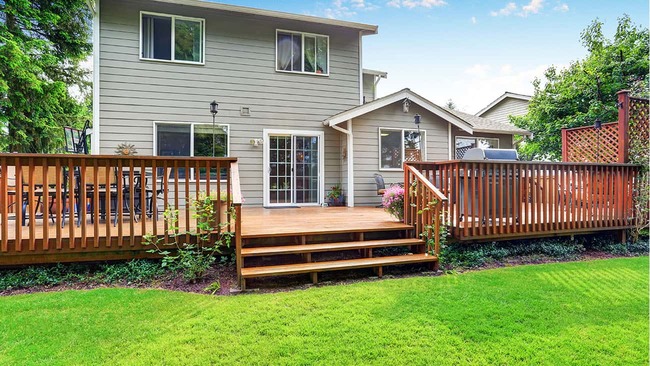Benefits and Drawbacks of Getting a HELOC on an Investment Property

Published June 9, 2022
Securing a HELOC on investment property purchases requires just as much consideration as when you purchased your primary residence. Investment properties can be highly lucrative. Unfortunately, these investments can also create long-term homebuyer hardships if you aren’t properly prepared.
Using a home equity line of credit can provide access to liquid cash, and homeowners can use the cash as they need it. A HELOC also allows homeowners to avoid dealing with lump sums that they must start repaying upon receipt. But choosing a loan for your primary residence differs from choosing one for any secondary property.
Using a HELOC on investment property dealings can provide homebuyers with a cost-effective cash source. However, before you make any major decisions, consult a trusted financial advisor or lender. A specific loan may have made sense for one of your properties in the past. That doesn’t mean you should get the same loan for your latest project. Getting a HELOC in any set of circumstances comes with pros and cons. You should know all your options if you plan to take out a HELOC on an investment property.
Can you get a HELOC for investment properties?
Homebuyers have the option to get a HELOC on investment property purchases. However, there are standard minimum requirements. Both the borrower and the property must meet these and specific lender requirements. Both may be stricter than the expectations lenders set for getting a HELOC on a primary home. In general, lenders will assume you have less of an incentive to make payments on a home that you don’t live in full time.
Establishing equity takes time, and leaving it unutilized may eventually harm you. Come up with a plan that puts your equity to use by speaking with a professional. You can speak about using a HELOC on investment property purchases with one of American Financing’s qualified mortgage consultants. Our consultants can help you to identify the HELOC benefits and drawbacks.
Pros and cons of investment property HELOCs
Individuals who are homeowners and property investors should come up with a plan to ensure their financial stability. Taking out a HELOC on an investment property to complete upgrades or pay for large purchases can make sense for financially healthy homebuyers. Still, you should consider the possible outcomes when you use a HELOC for those purposes.
Pros
-
Less risk for your primary residence. You secure a HELOC by using your property as collateral. Defaulting on the loan means that you’ll lose your property. Getting a HELOC on investment property will help you to keep one roof over your head. However, don’t get complacent. A lender can still take back your investment property if you default. You may also encounter other lender-specific consequences.
-
Access to a flexible line of credit. You can continuously draw upon your line of credit until you reach its limit. The draw period typically lasts for 10 or more years. Getting a HELOC is likely the most cost-effective option if you’re not sure about the amount of money that you’ll need to put into the house.
Cons
-
Higher interest rate. Greater risks often come with higher rates. Your financial profile doesn’t have the final say in whether you get a good rate for a HELOC on investment property.
-
More potential fees. Getting a HELOC can mean paying additional fees and closing costs. The fees can add up and increase your loan burden. Most lenders will typically avoid waiving the closing costs for investment properties, unlike on primary residences.
Choosing to use a HELOC for your investment property may be a good idea. It’s important to review your personal circumstances, plans for the HELOC, and any short- and long-term financial goals before making a decision.
If you’re ready to consider your options, get in touch. Our consultants can schedule a 10-minute appointment to answer any initial HELOC on investment property questions.
How to qualify for an investment property HELOC
Borrowers must meet specific requirements for a lender to consider them eligible for a HELOC. There are three set requirements. These requirements are:
-
Credit score
-
Debt-to-income (DTI) ratio
-
Equity
Check your credit score. Any lender will take note of your credit score when you apply for a HELOC on any property. Lenders don’t want to take huge risks when giving HELOCs to any homebuyers. You may need to exhibit a higher credit score if you apply for an investment property HELOC, such as a 720 to 740 minimum score.
Review your DTI ratio. Borrowing a HELOC on investment property can be similar to getting one for a primary residence. In both circumstances, you’ll need to show that your HELOC won’t disrupt your income and debt balance. Unlike for primary residences, you’ll likely need to guarantee that your personal DTI is below 40% to 50%.
Understand equity. You need to build equity before you can think about qualifying for an investment property HELOC.
If you want to qualify for a HELOC, lay out your financial documents and speak with an experienced mortgage consultant. You may notice some errors on statements or find new ways to manage debts. These discoveries can improve your overall financial health and long-term solutions.
Find a lender you can trust
There’s still a high risk if you get a HELOC on investment property, even if you don’t use your primary residence as collateral. We at American Financing can review your case. We will help you decide if getting a HELOC is right for you and what terms will best meet your needs.




